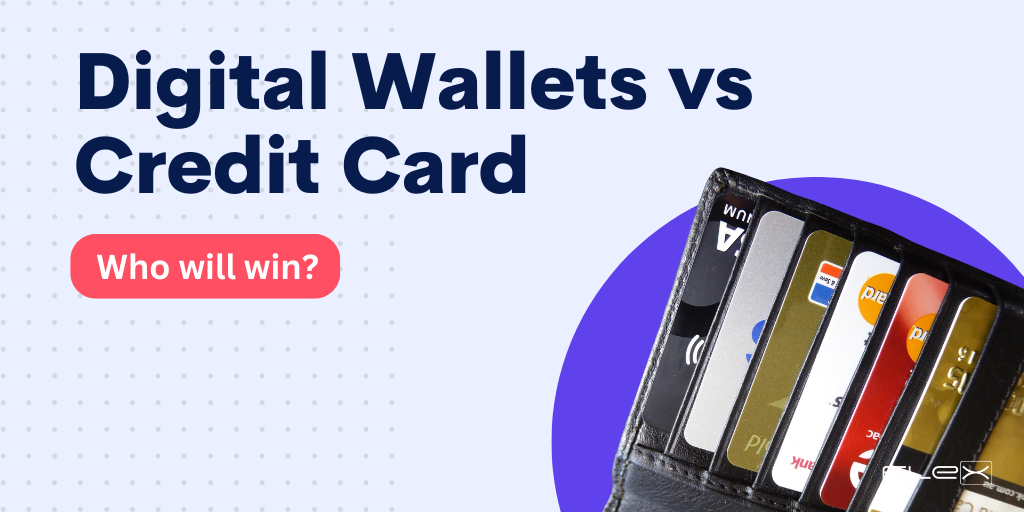The Rise of the Digital Wallet
The coronavirus pandemic has transformed how we conduct business all over the world and few sectors of the economy have been influenced as much as the financial industry. As people look for ways to avoid having in-person experiences, many are turning to digital wallets and other online banking solutions. Although the pandemic won’t last forever, it’s likely that this trend towards technological solutions in banking will continue.

According to the World Retail Banking Report, nearly 50% of banking institutions around the world have already made decisions about improving their digital innovation capabilities. Furthermore, its expected that more than 50% of consumers transition to digital banking solutions within the next three years. These changes in the financial industry are having major effects on credit unions and their members. For credit unions to thrive in the new economy, they will need to adjust to the times and provide their members with digital banking solutions.
The future is here, and the future is digital
The events of 2020 have led to the rise in use of digital wallets among all generations. Digital wallets are applications that allow users to shop online, send money to friends, withdraw cash from ATMs, and can even be scanned to pay in-person. Although America has been slower than other countries to adapt to the use of digital wallets, that trend is changing quickly.
Listed below are some of the reasons digital wallets are going mainstream:
- Awareness. As new digital wallets emerge and the existing players like Google Pay, Samsung, Apple Pay, Paypal and Zelle continue to improve their services, more people are becoming aware of their convenience. With more awareness, we can expect more people to adopt digital wallets.
- It starts with the youth. Younger generations that grew up with technology have shown a willingness to use digital wallets. In fact, 50% of 18-38 year olds claim to use digital wallets on a regular basis. Even more striking, perhaps, is that recent studies have shown nearly 50% of young people believe fiat money will be phased out over the next twenty years. If the youth are right, then the widespread adoption of digital wallets will be necessary and inevitable.
- Social aspects. In the age of social media, it’s no surprise that some digital wallet applications would borrow some of their features. Popular digital wallets like Paypal and Venmo have social aspects to them that have attracted new users, especially from younger generations.
- Online shopping. Since the pandemic began, e-commerce has soared. In fact, between the first and second quarters of 2020, online sales rose more than 30% to reach a staggering 211 billion in sales. Currently, e-commerce accounts for more than 15% of all U.S. sales.
- Convenience. No one can deny that digital wallets provide convenient services for consumers. Paying for an item with the click of a button or quickly sending money to a friend are functions that can make life easier. Furthermore, some digital wallet networks like Zelle can be integrated into your credit union’s existing online banking.
- Security. Americans were slow to adopt digital wallets in the first place mainly because they feared security issues. However, the fact of the matter is, digital wallets are safer than carrying a regular physical wallet. Tokenization and biometric verifications are just a few of the measures digital wallets employ to provide security.
It should also be noted that the rise of smartphone usage is the biggest push behind mass adoption of digital wallets. In America, more than half of children have access to a smartphone by age 11, and more than 80% of teenagers have their own phone. This is a trend that is unlikely to change in the coming years.
Other digital technologies
Although the rise of digital wallets is a huge factor to consider, it isn’t the only change taking place in the banking world. Knowing some of the other trends in technology that affect banking can help credit unions decide which technologies they wish to implement.
Listed below are some of the new technologies you can expect to see in the future of banking:
- Digital onboarding products. Onboarding is the process of acquiring new members and making sure they have access to the products and services your credit union offers. In the past, onboarding was usually done on-site. However, these days you can facilitate the registration of new accounts or banking products in a completely digital and remote way.
- Tokenization. Tokenization takes a member’s primary account number and replaces it with a unique token that can only be used by the member. By doing so, a member's credit card information is not accessible by the retailer when they make a purchase. This plays a significant role in increasing security and reducing the risk of fraud. Currently, the main token issuers are Mastercard, Visa and American Express.
- Biometric verification. Every individual has unique biological traits that distinguish them from other people. For example, no two people have the same fingerprint. Biometric verification, simply put, is a way to identify yourself to gain access to your online banking. Some of the common ways users can verify their identity through biometric verification include signatures, voice recognition, DNA, iris and retina scans, and hand and earlobe geometry. Biometric verification is vital to members’ security because these identifiers cannot be duplicated or forged.
- More push notifications. Push notifications are messages that show up on a users’ mobile phone. They look like text messages but are only sent to members who have the app installed. For credit unions, push notifications can notify members of deposits and withdrawals, low bank balances, available loans and credit cards and other services provided by the credit union. Push notifications can help communicate with members and prevent fraud.
Zelle, which has become one of the most popular digital wallets for credit unions, is a trusted digital payment network that integrates into the credit union’s existing mobile banking platform, making it convenient and easy for members to use. But no matter what form of digital wallet is used, the important thing is to understand the trend towards digital solutions in banking and start making moves in that direction.



